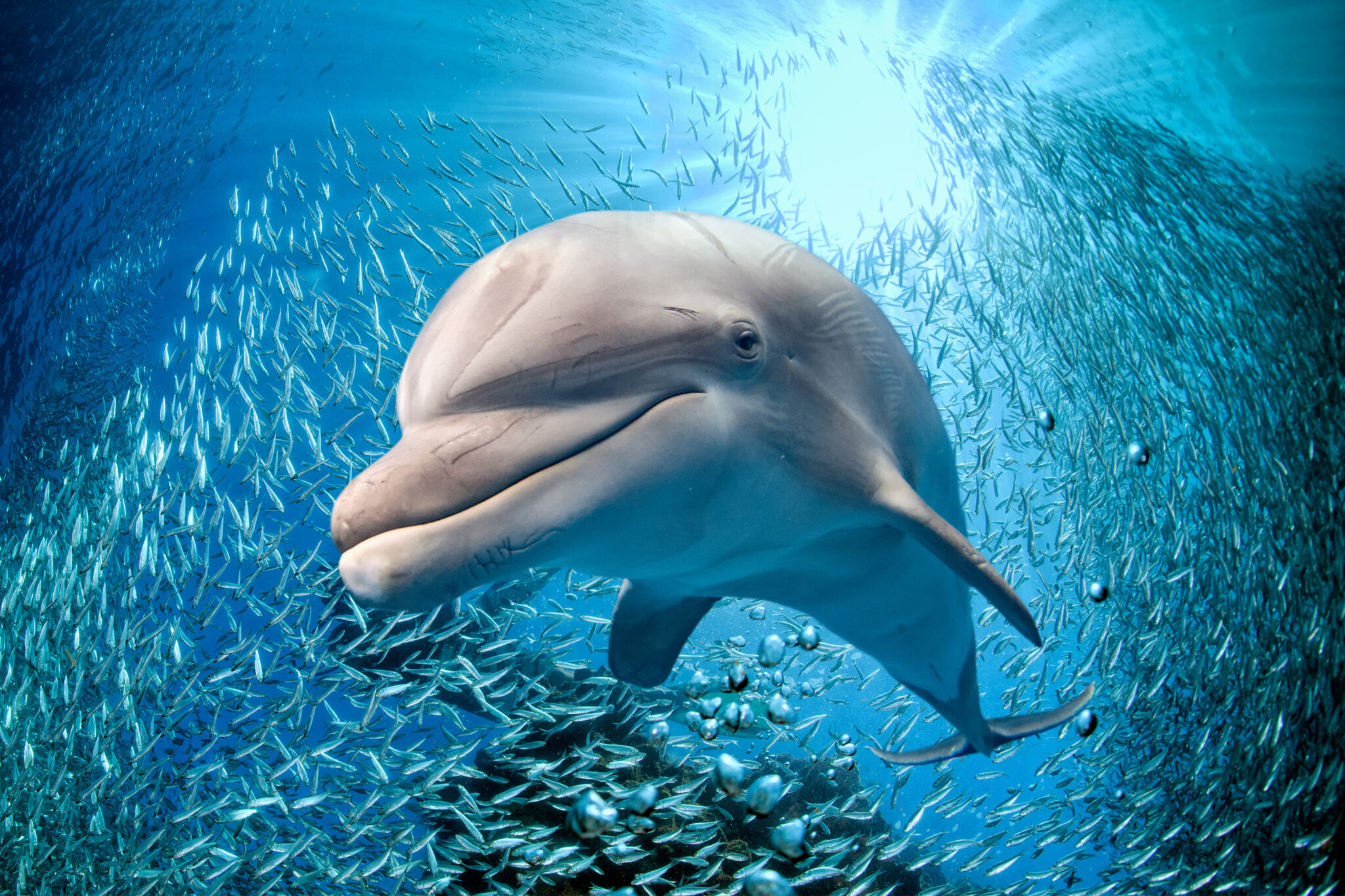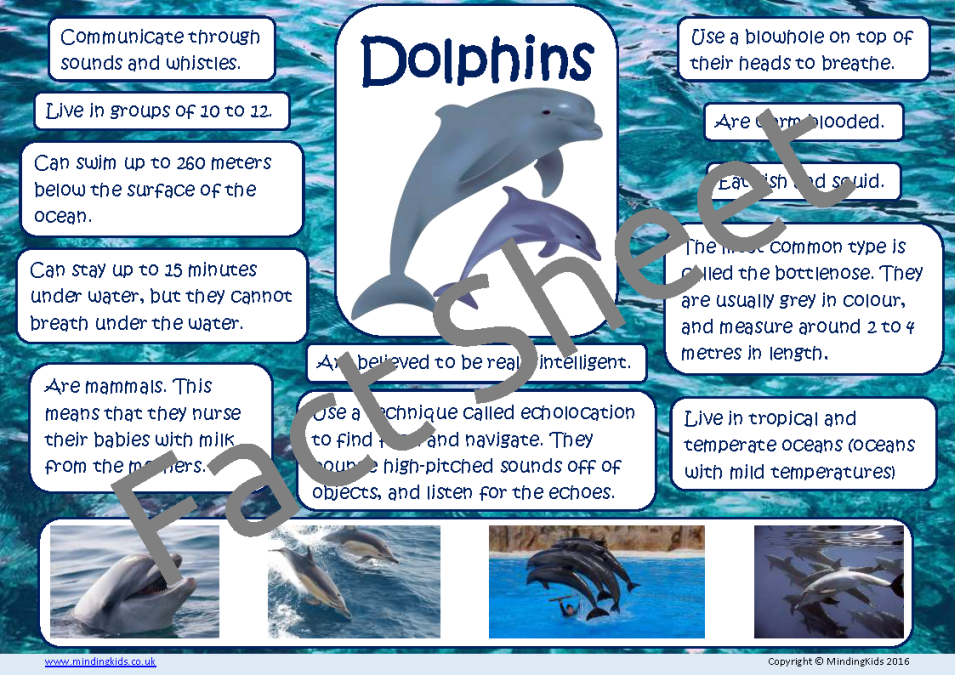Discover one of the most Interesting Dolphin Facts Regarding Their Interaction Skills
Discover one of the most Interesting Dolphin Facts Regarding Their Interaction Skills
Blog Article
Study the Sea: Fascinating Dolphin Realities for Ocean Lovers
The globe of dolphins presents an interesting intersection of knowledge, social habits, and environmental significance. With roughly 37 types, these marine creatures show a variety of amazing qualities that not just mesmerize ocean enthusiasts yet additionally highlight their vital role in aquatic environments. From their complex communication approaches to their impressive problem-solving abilities, dolphins challenge our understanding of pet intelligence. The pushing requirement for conservation initiatives to protect these animals and their habitats raises critical inquiries regarding our responsibility in the direction of the sea's inhabitants. What effects do these factors hold for our interactions with these impressive beings?
Dolphin Species Diversity
Variety is a hallmark of the dolphin household, encompassing a large range of species that show distinct physical characteristics, behaviors, and environments. The family members Delphinidae, generally referred to as oceanic dolphins, consists of around 37 types, each adjusted to specific eco-friendly particular niches. The bottlenose dolphin (Tursiops truncatus) is renowned for its intelligence and versatility, thriving in both open and coastal sea environments.
On the other hand, the whale (Orcinus whale), usually referred to as the awesome whale, is the largest member of the dolphin family members and is defined by its striking black-and-white coloration. Orcas show complex social frameworks and searching techniques, showcasing the behavior diversity within the household. Other species, such as the spinner dolphin (Stenella longirostris), are kept in mind for their acrobatic displays and choice for warmer waters, highlighting the flexibility of dolphins to numerous marine environments.
In addition, river dolphins, consisting of the pink river dolphin (Inia geoffrensis), inhabit freshwater settings, additionally showing the wide-ranging environments that dolphins occupy. Dolphin Facts. This amazing diversity not only enhances aquatic communities yet additionally highlights the value of preservation initiatives to shield these exceptional animals and their atmospheres
Social Habits and Interaction
The intricate social actions and interaction techniques of dolphins are vital parts of their presence, helping with group communication and improving survival. These very smart aquatic creatures exhibit complicated social structures, usually creating cases that can vary from a few individuals to over a hundred. Within these teams, dolphins take part in habits such as cooperative hunting, social play, and shared security, which foster solid bonds among participants.
Dolphins utilize an advanced array of vocalizations, consisting of clicks, whistles, and body language, to communicate details and express emotions. Their trademark whistles function as unique identifiers, similar to names, making it possible for individuals to call out to each other. This singing communication is enhanced by non-verbal signals, such as jumping, slapping the water, and integrated swimming, which additionally enhances their interactions.

One-of-a-kind Feeding Practices
Special feeding routines characterize dolphins, showcasing their versatility and knowledge in various marine settings. These marine animals are understood for their varied diet plans, which mostly are composed of fish, squid, and shellfishes. Their hunting strategies can differ dramatically, usually tailored to the details target and ecological conditions.
One noteworthy technique is participating searching, where dolphins work in groups to herd schools of fish right into limited formations, making it much easier for people to capture their meal. This social behavior not just enhances their feeding efficiency however likewise enhances social bonds within the pod. In addition, dolphins have actually been observed employing a method called "fish-whacking," where they use their tails to confuse or stun fish, assisting in much easier capture.
One more interesting feeding Source habit is echolocation, which permits dolphins to detect target also in murky waters. By producing acoustic waves and analyzing visit our website the returning mirrors, they can recognize the size, shape, and area of their targets. This exceptional ability highlights their adaptability in different environments, from superficial coastal areas to deeper nautical waters. On the whole, the unique feeding routines of dolphins highlight their function as experienced killers within the marine community, demonstrating both knowledge and ingenuity.
Intelligence and Trouble Addressing
Dolphins exemplify amazing cognitive abilities that prolong past their sophisticated feeding strategies. Their knowledge is obvious in their problem-solving skills, social interactions, and capability for knowing. Research study has actually demonstrated that dolphins can use tools, such as utilizing aquatic sponges to safeguard their rostrums while foraging on the seafloor. This behavior highlights their capacity to manipulate their atmosphere effectively and adjust strategies to enhance survival.
Furthermore, dolphins exhibit innovative interaction skills, employing a complex system of clicks, whistles, and body language. Dolphin Facts. This interaction is critical for working with team tasks, such as hunting and interacting socially, highlighting their capability to work collectively towards a typical goal. Their ability to comprehend abstract concepts, consisting of self-recognition in mirrors, further emphasizes their cognitive elegance
In regulated researches, dolphins have actually revealed a capability to resolve problems and do jobs that call for both memory and essential thinking. These communications indicate not only knowledge but likewise a desire to engage with their environment in unique ways. On the whole, the cognitive prowess of dolphins places them amongst the most intelligent types in the world, promoting a deeper gratitude for their function in marine ecosystems.
Preservation and Environmental Impact
Preservation efforts intended at protecting aquatic communities are critical for protecting dolphin populaces and their environments. Dolphins are highly conscious environmental adjustments, and their survival is intricately connected to the health of nautical ecosystems. Overfishing, pollution, and climate adjustment position substantial risks to both dolphins and their settings.
Overfishing interrupts the food cycle, bring about a decline in prey species vital for dolphin survival. Moreover, toxins such as chemicals and plastics accumulate in aquatic atmospheres, jeopardizing dolphins through ingestion and bioaccumulation. Raised water temperature levels and sea acidification, effects of environment modification, better endanger the fragile balance of aquatic communities, impacting dolphin breeding and migratory patterns.
By focusing on conservation initiatives, we can ensure that future generations appreciate the elegance and vigor of dolphins and the oceans they occupy. Protecting aquatic ecological communities is not just about saving dolphins; it is regarding preserving the detailed internet of life that sustains us all.
Conclusion
Dolphins exhibit the intricacy and richness of marine life with their varied types, intricate social frameworks, and progressed cognitive capabilities. As important elements of aquatic ecosystems, dolphins underscore the necessity of ongoing preservation efforts to safeguard their environments.
Various other species, such as the spinner dolphin (Stenella longirostris), are noted for their acrobatic screens and preference for warmer waters, highlighting the adaptability of dolphins to different aquatic ecological communities.
Generally, the distinct feeding habits of dolphins highlight their duty as experienced killers within the aquatic environment, showing both knowledge and ingenuity.
Generally, the cognitive prowess of dolphins use this link positions them among the most intelligent types on the planet, fostering a deeper gratitude for their function in aquatic environments.

Report this page